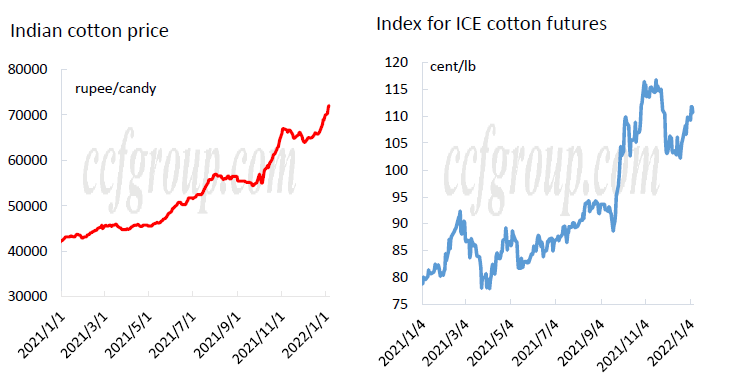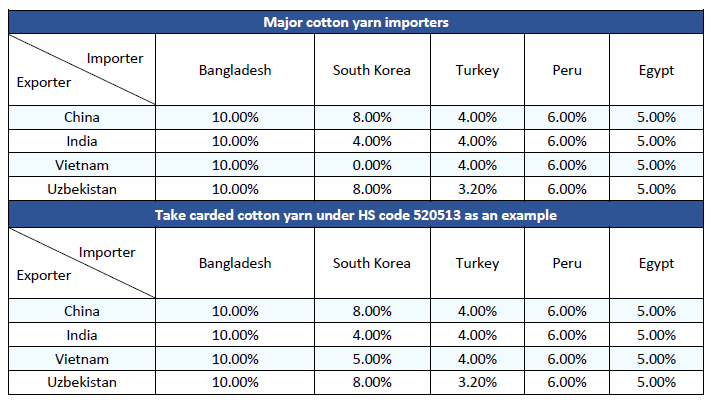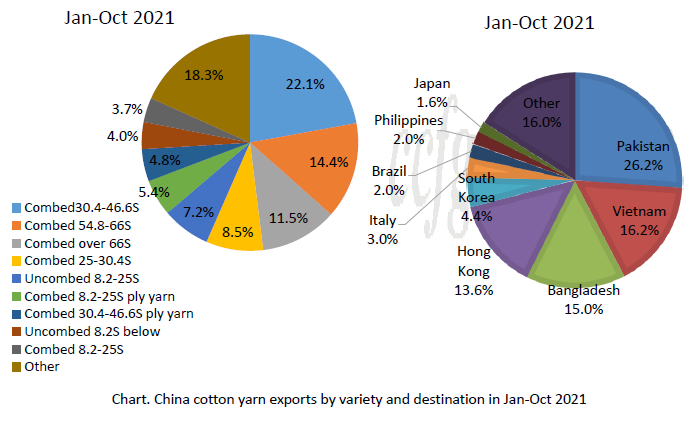Will rocketing imported cotton yarn spur Chinese cotton yarn demand?
Recently, cotton price in India surged all the way to 72,100rupee/candy from 65,800rupee/candy on Dec 21, with an increase of 9.57% and hitting ten years’high, due to much less than expected cotton arrivals in India local market and 10% tariffs rate imposed on imported raw cotton. It also spurred forward Indian cotton yarn offers high. Take Indian carded 32S for air-jet as an example. It jumped from $3.66/kg, to $3.9/kg and then to $4.2/kg during Dec 22 to Jan 10, equal to about 32,000yuan/mt after-tax. The same quality was sold nearly 4,000yuan/mt lower at 28,000yuan/mt in China market.

Similarly, forward Vietnamese cotton yarn offers were also adjusted up along with US cotton price after a short restocking period shown up in mid-Dec. Take Vietnamese carded 32S for weaving, bleachable, as an example. It was offered at about $4.1/kg, about 29,700yuan/mt after-tax. In China, it was offered at 28,500yuan/mt and was not traded well. According to CCFGroup, the offers of foreign cotton yarn kept exaggerated in the second half of 2021, but they were accepted by local textile industry. However, the recent surge weakened the export of Vietnamese and Indian cotton yarn to a certain extent, and will it bring opportunity to the export of Chinese cotton yarn?


From the figure above, Chinese cotton yarn that could compete with those from India, Vietnam and Uzbekistan is mainly combed 30.4-46.6S (especially combed 32S). The import tariff of India imposed on Chinese cotton yarn was up to 20%, providing limited operation room for Chinese cotton yarn, while facing export to Bangladesh which is inquired a bit more, Chinese cotton yarn also does not have advantage if just from the aspect of import tariff. And Bangladesh market also started to resist big-ticket sources. Overall cotton yarn exports mostly stayed at a small volume within 10-20kt per month, and Xinjiang cotton is restricted in international market, so the increase in export has limited promotion to overall industry. But from other angle, high-priced foreign cotton may reduce China’s import of cotton yarn, and thereby increase the local consumption of Chinese cotton yarn.
- Top keywords
- Cotton Price
- Cotton Futures Price
- Cotton Futures
- CZCE
- PTA Futures Price
- Chemical Fiber
- Polyester Prices
- Wool price
- PTA Futures
- Shengze Silk
- China
- Yarn Price
- price
- China Textile City
- Fibre Price
- Benzene Price
- Cotton
- Index
- Cotton Index
- PTA
- fabric price
- NYMEX
- Top 10
- textile industry
- Spot Cotton
- Cotton Yarn
- Polyester Price
- Futures
- PTA Price
- cotton yarn price

